Cards In This Set
| Front | Back |
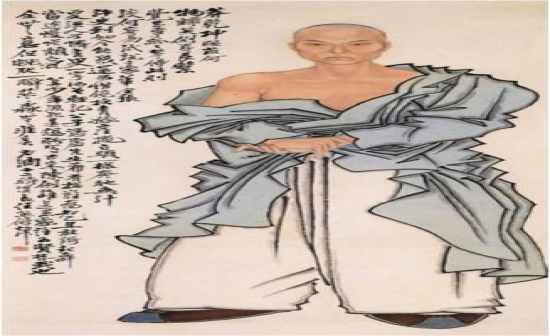 |
1.3 Ren Xiong (1823-1857) Self-Portrait
Undated, Hanging Scroll, Ink and color on paper Palace Museum,Beijing One of the first self-portraits; relatively naturalistic modeling of the face and upper body contrasts dramatically with the powerful linear rendering of the garments, as though to juxtapose the artist's contemporary reality with the antique traditions to which Chinese painting might pay homage |
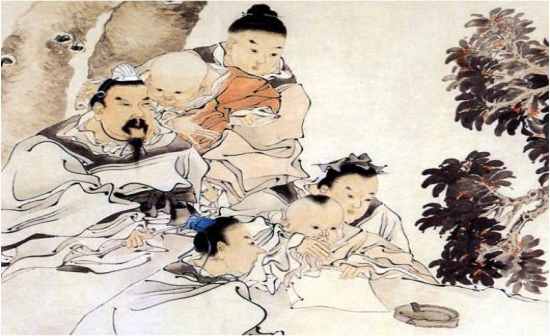 |
1.8
Ren Yi (Ren Bonian,1840-1895) Five Successful Sons, 1877, Qing Dynasty Hanging Scroll, Ink and color on paper,palace Museum, Beijing This image depicts a tenth century scholar named Dou Yujun, of the state of Zhou, whose five sons all passed the imperial civil service examinations. |
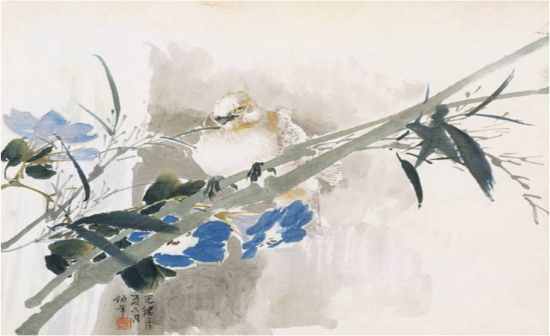 |
1.10 Ren Yi (Ren Bonian, 1840-1895), Bird on a Branch, 1882, from the twelve-leaf Album of Figures, Flowers, and Birds, ink and color on paper.
, Ren Yi creates the bird’s body from blank paper left in reserve against a gray ink background, one that suggests a hazy tree or rock in the background. Thee surface-covering composition, and the complete absence of outlines, strongly suggests Ren Yi’s familiarity with Western watercolor paint- ing, but the abbreviated, close-up composition possesses the power of poetic suggestion typical of the best Chinese painting. |
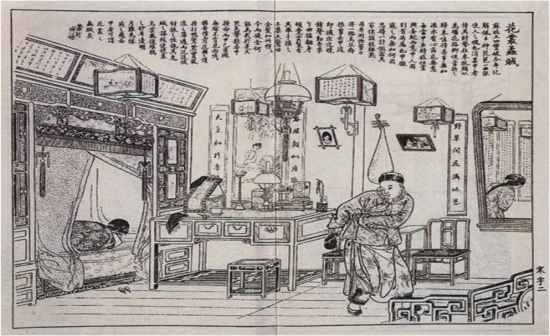 |
1. 13 Wu Jiayou (Wu Youru, d. 1893), Thief in the Flower Garden, 1891, Qing Dynasty, published in Feiyingge huabao (“Fleeting Shadow Pavilion Pictorial”) 吴加油
Features two special features: natural history and famous ladies. Fleeting Shadow Pavilion Pictorialmay be viewed as a typical example of Shanghai's hybrid culture, appealing to an urban Chinese audience with its traditional format, but also filled with the most up-to-date of subjects and images. |
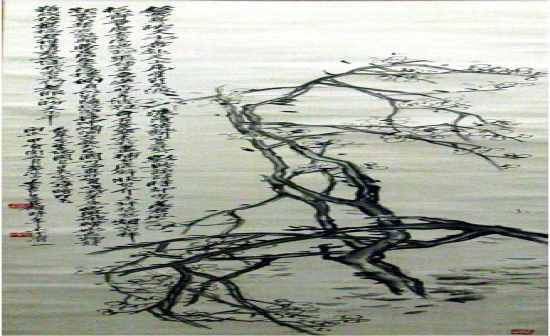 |
1.19
Wu Changshi (1844-1927) Plum Blossom, For Nagao Uzan 1914 hanging scroll, ink on satin 吴常识 A painting Wu gave to his Japanese friend Nagao Uzan in 1914 is an excellent example of his plum painting in the epigraphic manner. |
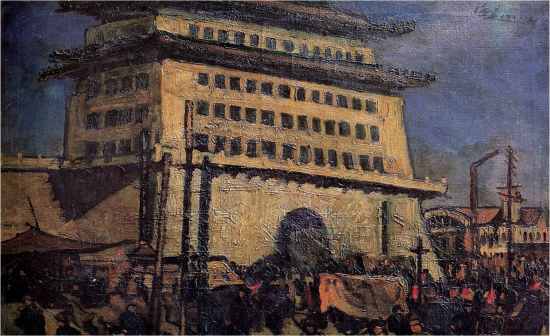 |
2.13 Liu Haisu (1896-1994), Qianmen, 1922, oil on canvas , National Art Museum of China, Beijing
刘海速 Qianmen is an image of the old imperial gate directly to the south of Tiananmen, Liu Haisu was particularly inspired by Vincent Van Gogh, whom he perceived as a rebel genius, and he began painting Chinese subjects with the thick, bold brush- strokes associated with the manner of the European master. |
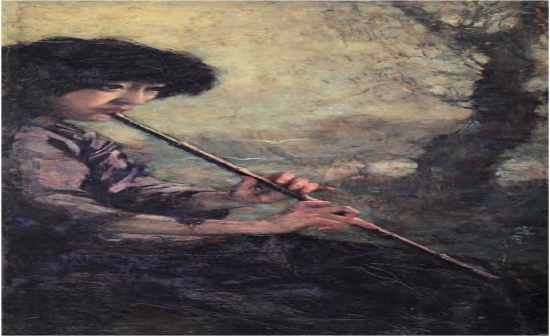 |
2.16
Xu Beihong (1895-1953), Sound of the Flute (Portrait of Jiang Biwei) 1926, oil on canvas, Xu Beihong Memorial Museum, Beijing 徐悲鸿 study art in Europe, becoming one of the very few Chinese artists to have earned a formal degree from the École des Beaux-Arts in Paris when he returned to China in 1926. In these works he achieves Cai Yuanpei’s ideal “beauty,” along with highly developed technical skill in the European art manner. Romantic portraits of his young wife, Jiang Biwei, from the same period, such as Sound of the Flute, imbue her with luminos- ity and sensuality. |
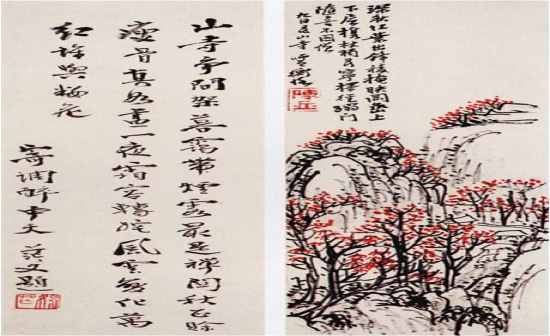 |
3.1
Chen Hengque (Chen Shizeng; 1876-1923) Album of Miscellaneous Paintings on Elongated Format, 1922 album leave ink and color on paper 陈横缺 was train in japan of paiting. He follows the idea of innocence in his painting, and this painting is accompanied by an inscription by Yao Mangfu, |
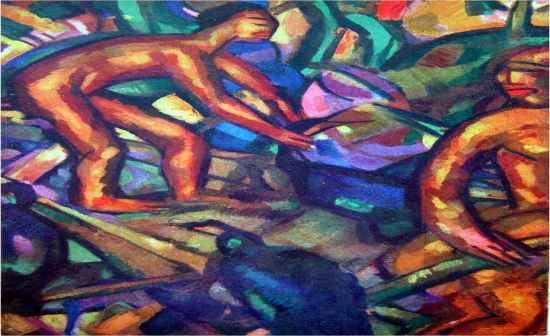 |
3.10
Lin Fengmian (1900-1991) Composition, ca. 1934, Oil on canvas Lost, from Meishu zazhi [Studio] no.2 (February 1934) 林风眠 study in europe. Lin’s more formalist oil, Composition, published in 1934, is typical of his cubist approach and is the only surviving illustration to suggest the intensity of his palette [fig. 3.10]. During World war 2 this paint did not survive. |
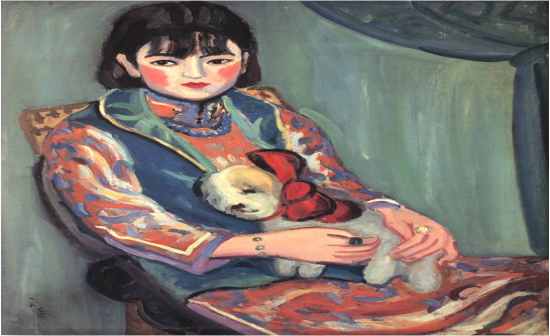 |
3.18
Guan Zilan (1903 -1986) Portrait of Miss L, 1929 Oil on canvas, National Art Museum of China, Beijing 关子连 Guan Zilan’s pure colors and thick pigment are typical of the Fauvist styles popular in Tokyo in the 1920s and 1930s. Portrait of Miss L, is clearly influ- enced by the styles of Henri Matisse and Yasui Sotarō. . Miss L is actually garbed in the latest Shanghai fashion, with a high Mandarin collar and a stylishly short haircut similar to one the artist her- self sported in 1928. |
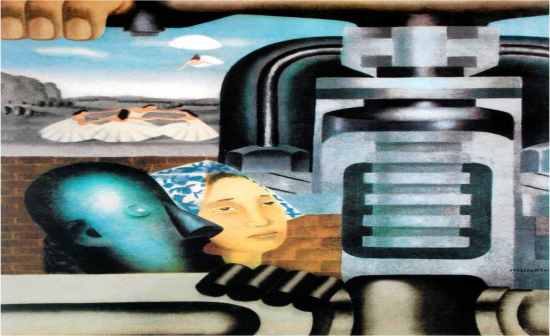 |
4.1
Pang Xunqin (1906-1985), Composition, 1934, oil on canvas destroyed in 1966, Courtesy of Pang Tao 庞 殉情 who returned from Paris in 1930, was a key figure among a number of talented artists in the group The Storm Society (Juelanshe), one of the most notable groups formed to promote previously neglected forms of avant-garde art, people from japan and france. |
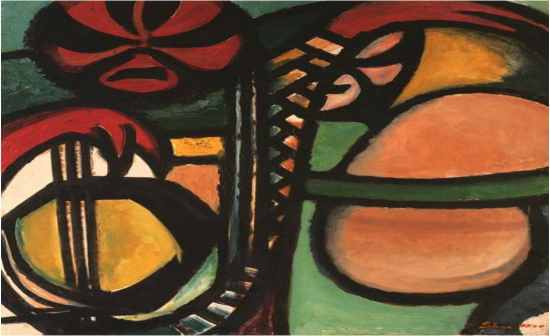 |
Zhao Shou (b.1912)
Color, 1934 Oil on canvas, Guangzhou Municipal Art Museum 赵手 Zhao Shou’s paintings attempted to transcend reality through surrealism or abstraction. Chinese Independent Art Association was inspired by the various schools of modern art and accepted new ideolo- gies, new subject matter, and new methods. |
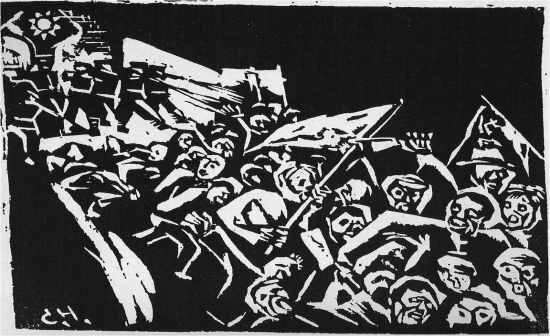 |
4. 11 Jiang Feng (1910-1982), Kill the Resisters, 1931, woodcut
National Art Museum of China, Beijing 江峰 - depcist troops of the Nationalist government aiming rifes at the crowd as terrified demonstrators flee in chaos. An anti-Japansese prints, speak out the word from the aritist. |
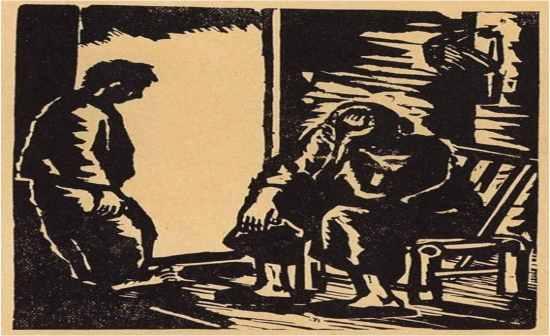 |
4. 13
Chen Tiegeng (1908-1970) Mother and Child, 1933 woodcut, Lu Xun Memorial, ShangHai 陈铁更 painting which represented the impoverished family of a rickshaw puller Chen had befriended as part of his labor activism. the group was destroy and arrest. |
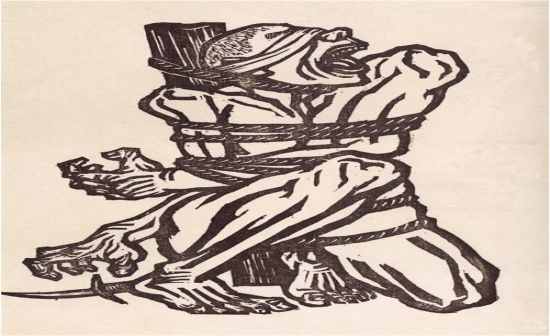 |
4.16
Li Hua (1907-1994), China, Roar! 1936, woodcut, Lu xun memorial, shanghai. 刘海 is teacher in guangzhou, and students of Lu Xun. He's the organizer of the modern woodcut society. Although the military, social, and economic problems that affected China during this period are frequent themes for art in Guangzhou, as in Li Hua’s China, Roar! |



